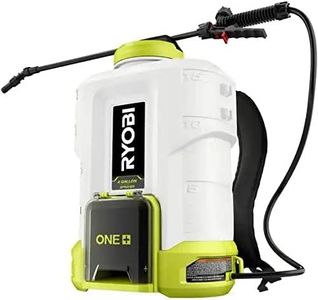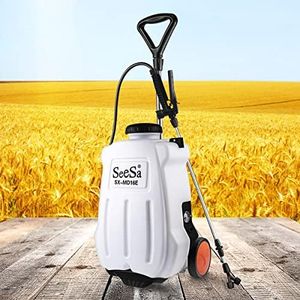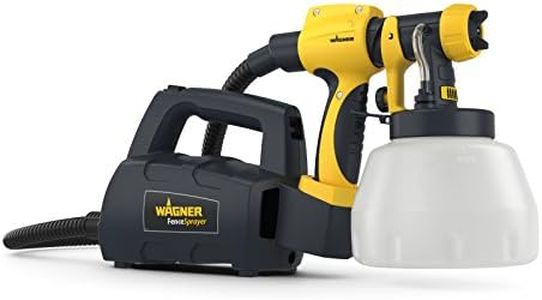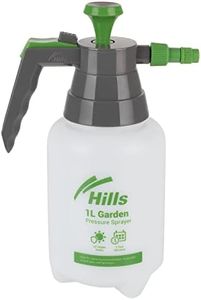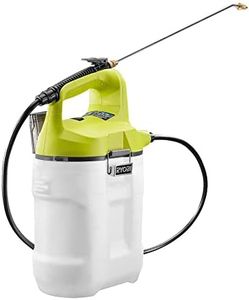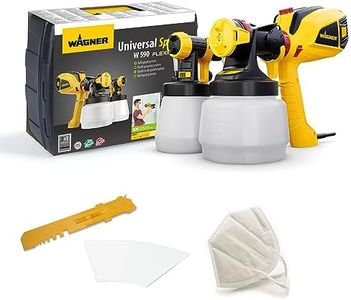We Use CookiesWe use cookies to enhance the security, performance,
functionality and for analytical and promotional activities. By continuing to browse this site you
are agreeing to our privacy policy
10 Best Fence Sprayers
From leading brands and best sellers available on the web.Buying Guide for the Best Fence Sprayers
Choosing the right fence sprayer can make painting or staining your fence a fast, even, and satisfying job. Rather than spending hours with a brush or roller, the right sprayer can help you cover large areas smoothly and reach tricky spots with ease. To pick the best fit for your needs, it's important to understand what features matter most, how they align with your project size and type, and what your own comfort level is with using such tools.Power SourceThe power source refers to how the sprayer operates—mainly whether it's electric, battery-powered, or manual (pump or pressurized). This matters because it affects both convenience and mobility. Electric sprayers plug into an outlet and tend to provide strong, consistent power—good for large or ongoing jobs where a cable isn't inconvenient. Battery-powered sprayers offer freedom of movement and are ideal for use further from a power source, but need battery recharging or replacement. Manual sprayers, like pump versions, don't require power and are lightweight but can tire you out on big projects. To choose, think about whether you'll be close to outlets, how much fence you’ll spray at once, and whether you want total freedom from cords.
CapacityCapacity is about how much paint or stain the sprayer’s container can hold at one time. This is important because a bigger tank means fewer stops to refill, which is great for large fences, while a smaller tank makes the sprayer lighter and easier to handle, good for small jobs or spot-touching. Generally, small tanks up to 1 liter are best for quick fixes or intricate jobs, medium tanks (1-2 liters) are good for average residential fences, and large tanks (over 2 liters) suit bigger properties or extended use. Consider the area you’re covering: bigger spaces mean bigger tanks save time but also weigh more.
Spray Pattern and AdjustabilitySpray pattern refers to the shape and width of the spray as it comes out. Some sprayers let you adjust this—choosing between vertical, horizontal, or round patterns, and controlling how narrow or wide the spray is. This matters because a wide, fan-shaped spray covers large flat panels fast, while a narrower setting is better for corners or edges. Adjustable patterns give you flexibility, so you can use the same tool for different parts of the fence. If you have a fence with lots of detail or corners, pick a sprayer that lets you adjust the pattern; for long, straight runs of fencing, this is less critical.
Flow RateFlow rate measures how much paint or stain the sprayer applies in a given time, usually listed as liters per minute or gallons per hour. A higher flow rate gets the job done faster for big areas but uses more product and can be harder to control for detailed work, while a lower flow rate is suited to smaller jobs and offers more control for precise application. Think about what you’re spraying: if speed for long, flat stretches is the goal, a higher flow rate is best; if you need to be careful to avoid over-spraying small sections, a lower flow rate is ideal.
Ease of CleaningCleaning is a vital but often overlooked aspect. Some sprayers are easier to take apart and clean, with fewer parts or special features that help flush out paint or stain. This is important because a clean sprayer lasts longer and always works at its best. Models that can be rinsed quickly or have parts you can easily scrub are best if you want fast cleanup, especially after working with sticky or fast-drying products. Choose a sprayer marked as easy to clean if you dislike maintenance, or if you plan to switch between different paints or stains often.
Weight and ErgonomicsWeight and ergonomics describe how heavy the sprayer is and how comfortable it is to hold and use for extended periods. Heavier models can be tiring during long jobs, while lightweight options are easier on your arms and hands. Features like soft grips or balanced handles make a noticeable difference if you’re spraying for a long time. If you have a lot of fence to cover or expect lengthy painting sessions, look for a lightweight and ergonomically designed sprayer to minimize fatigue. For quick jobs or occasional use, this is less pressing but still something to keep in mind.




